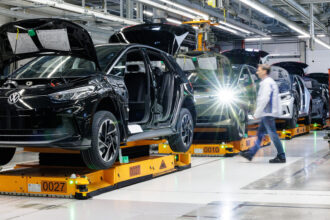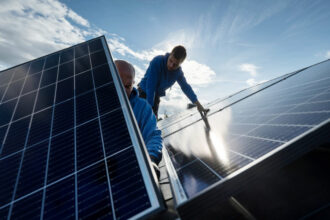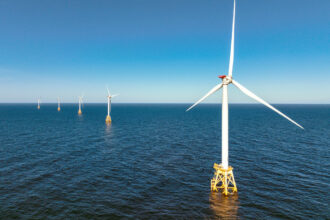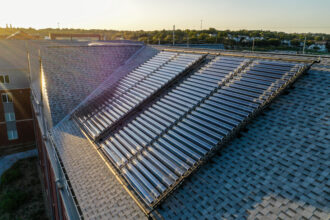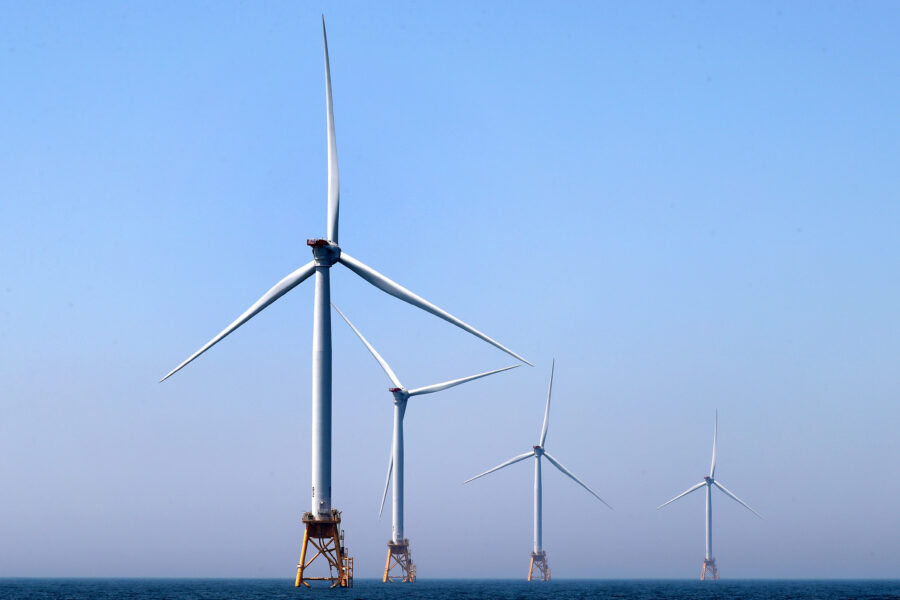Before the end of this decade, you may be able to buy a car containing steel that was produced with near-zero emissions.
The technology already exists, and there are eager consumers in the form of automakers and other manufacturers who would like to market a low-emissions product.
But first, a steel company needs to build a next-generation plant and show that low-emissions steel can be made on a large scale and at a competitive price.
H2 Green Steel of Sweden believes it is poised to win this race, with plans to open a commercial-scale plant by 2025.
I spoke with Henrik Henriksson, H2’s CEO, on the sidelines of the Web Summit conference last month in Lisbon. I wanted to know whether the company was on track to complete its plant, and whether low-emissions steel makes sense financially for buyers.
“We’re building the site now,” he said of the plant in Boden in northern Sweden. The company, founded in 2020, has completed the ground work on the plant and is now raising the frame of the factory structure.
H2’s goal is to produce a first batch of steel by December 2025 and then ramp up to be able to produce 5 million metric tons of steel annually by 2030.
The company says its steel will be made with 95 percent fewer carbon dioxide emissions compared to conventional methods that burn fossil fuels. (There is a larger discussion taking place in the industry and among governments about how to measure emissions from steel production and determine what qualifies as “net-zero” steel, as shown in this recent report from the International Energy Agency.)
H2’s plant will use Sweden’s vast supply of inexpensive hydropower to provide the electricity needed to make hydrogen from water. The company will use hydrogen gas to cause a reaction with heated iron ore to transform the ore into a form of iron that can be made into steel.
Mercedes-Benz and Porsche have both agreed to buy H2 steel for use in future vehicles.
I asked Henriksson how the use of low-emissions steel would affect the price of a car or light truck.
“If you would decarbonize the whole product, that would probably be around $500,” he said. “And then you can say that probably around $100 of that would be the steel.” The other $400 of the increase would cover the costs of making other materials, like rubber and plastics, using low-carbon methods.
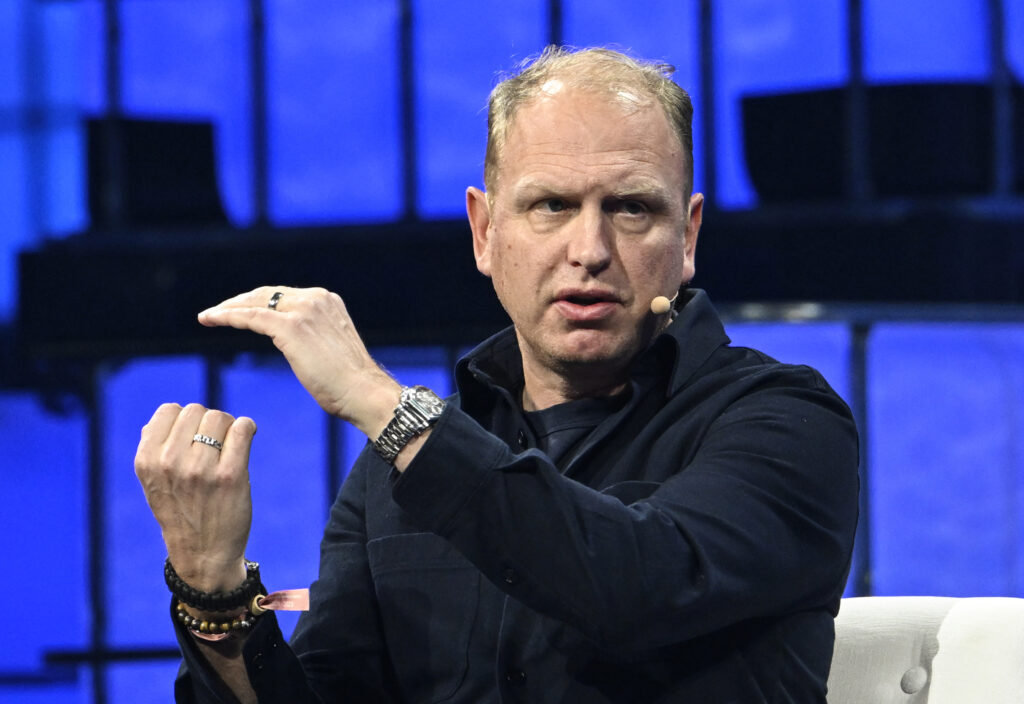
What would be the cost for the automakers buying steel in bulk?
H2’s contracts call for its customers to pay a premium of 25 percent to 30 percent above the market price of steel.
But auto manufacturers in the European Union will be able to make up for the higher cost because they will be paying almost nothing under the EU’s emissions trading system, which will be phased in by 2034. The system will lead to new charges related to carbon emissions from making conventional steel.
The result, Henriksson said, is that buyers of his steel will be paying about as much as buyers of conventional steel in 2030, at least in the EU.
What about steel producers in places that don’t have emissions trading, like the United States and most of the rest of the world? They will have some cost advantages over the EU in the short run, but they run the risk of falling behind in terms of climate action and technology development.
“Whoever starts the transformation now will be very well-positioned,” Henriksson said.
One of his company’s distinguishing factors is that it would be the first to operate a commercial-scale plant making low-emissions steel. It does this in part by skipping the step of having a pilot-scale plant. Other low-emissions steel companies are starting with pilot-scale plants to make test batches of steel, but H2 has said it is confident enough in the technology and the demand for the product to go straight to a full-scale plant.

H2 also plans to be a hydrogen company in addition to being a steel company. It wants to sell hydrogen to other industrial users.
H2 is part of a low-emissions steel landscape that includes other start-ups, such as HYBRIT of Sweden, and established ones such as ArcelorMittal of Luxembourg.
HYBRIT, which I wrote about in 2021, already operates a pilot-scale plant and has a goal of mass production by 2026.
ArcelorMittal, the second-largest steel producer in the world, has a corporate goal of net-zero emissions by 2050. The company is taking steps to reduce emissions at existing plants, like a projected 60 percent reduction at its plant in Hamilton, Ontario, and at pilot-scale plants, like one being built in Hamburg, which will use a hydrogen process to achieve much lower emissions.
ArcelorMittal is also an investor in Boston Metal, a U.S.-based start-up that is developing a process called “molten oxide electrolysis” that uses electricity to heat iron ore, as opposed to using hydrogen. Boston Metal has said it will have a pilot-scale plant running by 2024 and a commercial-scale plant by 2026.
It is vitally important that at least some of these companies succeed, both in terms of technology and business, said Jeffrey Rissman, senior director of industry for Energy Innovation, a San Francisco-based think tank.
“There is no way to stop climate change or to stabilize the climate at any temperature whatsoever, without decarbonizing industry, and iron and steel in particular,” he said.
The steel industry is responsible for 8 percent of global energy system emissions, according to the IEA.
I asked Rissman how best to vet the aspirations of these companies.
“The thing about these companies is they always want to claim. ‘Oh, we’re the first. We’re the startup with the innovative idea no one else has ever had.’ And so, you really need to look at what the details are.”
A lot of the big details are similar for the low-emissions steel initiatives, which are using renewable energy to make hydrogen to make steel, with the exception of Boston Metal which uses electricity. The differences in performance will come down to technical details like the way they design their processes, and financial details, like how much money they are able to raise and how effectively they manage costs.
One factor I hadn’t considered until Henriksson mentioned it is the importance of having a large and inexpensive supply of clean electricity.
This story is funded by readers like you.
Our nonprofit newsroom provides award-winning climate coverage free of charge and advertising. We rely on donations from readers like you to keep going. Please donate now to support our work.
Donate NowThis is part of the reason why H2 and HYBRIT are planning to operate in northern Sweden, where there is plentiful hydropower.
So what parts of the United States hold a similar appeal?
“I think Texas is well positioned,” Henriksson said. He likes the state’s abundance of wind power and its proximity to Brazilian iron ore.
H2 is looking at additional locations, so it may not be long until low-emissions steel comes to the place that is also the U.S. capital of oil and gas.
Other stories about the energy transition to take note of this week:
EV Sales Pass 1 Million and Are Up More than 50 Percent from Prior Year: U.S. sales of electric vehicles passed 1 million in a calendar year for the first time in November, with a month yet to go to pad the number for 2023, Michelle Lewis reports for Elektrek. The National Automobile Dealers Association said EV sales from January to November were 1,007,984, an increase of 50.7 percent from the same period in 2022. The 1 million sales mark is no surprise, considering the trend in recent years and strong sales in the first three quarters of this year, but it is still an important milestone in the growth of the EV market. Some manufacturers have raised concerns that EV sales and profits are not as high as they would like, but the overall growth helps to put those concerns into perspective.
Congress Provided $7.5 Billion for EV Chargers, But Zero Have Been Built: The 2021 bipartisan infrastructure law included $7.5 billion to install EV chargers. Two years later, not a single charger has been installed due to delays caused by cumbersome regulations, as James Bikales reports for Politico. The slow pace of the rollout means that few federally funded chargers will be installed by next year’s election, which could help to fuel Republican attacks on the Biden administration’s strategy for boosting EVs.
GM Believes It Will Start Making Money on EVs in 2025 as Higher Margin Models Arrive: General Motors says it is on track to generate single-digit profit margins on electric vehicles in 2025, which would be an improvement from the current losses the company is experiencing on its EVs, as Tom Krisher reports for the Associated Press. Paul Jacobson, GM’s chief financial officer, said the company has struggled to ramp up EV manufacturing, but expects its finances on the models to improve as it gains efficiency in manufacturing benefits from reductions in battery costs. The comments come as GM has slowed its EV rollout in response to demand that has not grown as much as the company had anticipated.
New York’s New Offshore Wind Solicitation Shows State Procurements Are Becoming Friendlier to Developers: As the U.S. offshore wind industry struggles with the effects of inflation and high interest rates, New York’s state government is making an effort to keep development on track with a new solicitation that is friendly to the concerns of companies that would build the projects. Two attorneys who work in wind development told Diana DiGangi of Utility Dive that New York’s approach could be a model for other states. For example, New York is allowing for an extended bid process and it is relaxing its rules on cancellation fees. This is a welcome step as states and offshore wind companies are looking to regain momentum.
California Regulators Cut Incentives for Rooftop Solar Even Further: The California Public Utilities Commission last week approved changes to rules for compensation of rooftop solar owners, reducing some of the financial advantages of pairing solar with battery storage. Jeff St. John of Canary Media reports that the utility companies backed the change, which have outraged solar and storage industry groups who say this is the latest in a series of moves by regulators to harm the country’s leading market for rooftop solar. One analysis says the updated rules will reduce compensation for solar battery owners by 10 to 15 percent, or about $230, compared to before the change. I’ve written often, including in April, about how California regulators seem to be hostile to their rooftop solar industry, and this latest move is additional evidence.
Inside Clean Energy is ICN’s weekly bulletin of news and analysis about the energy transition. Send news tips and questions to [email protected].







